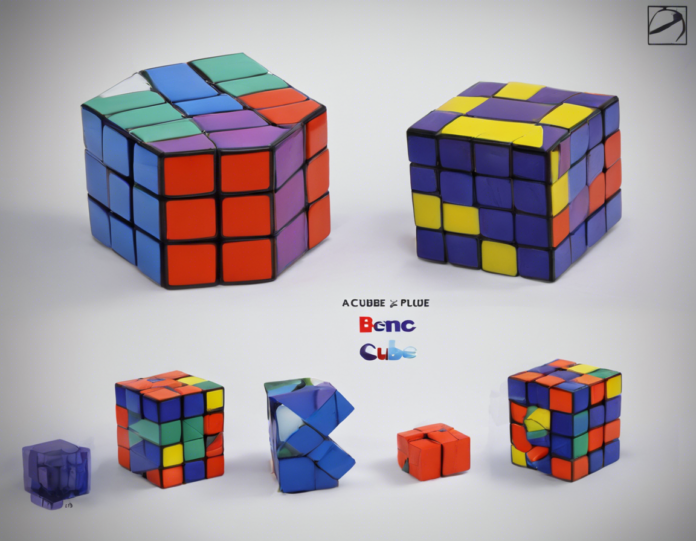Are you keen to unravel the mysteries behind the sums of cubes? Do you wish to simplify the complex equations involving cubes? Look no further, as we delve into the fascinating world of the sum of cubes formula in this comprehensive guide.
Understanding the Sum of Cubes Formula
When we talk about the sum of cubes, we refer to the process of adding two cubes together. Specifically, if we have two numbers a and b and want to know the sum of their cubes, we can use the formula:
a^3 + b^3 = (a + b)(a^2 – ab + b^2)
This formula allows us to avoid actually calculating the cubes of individual numbers and simplifies the process greatly. Let’s break it down further:
Breaking Down the Formula
-
First, we notice that the formula on the right-hand side involves a multiplication of two terms: (a+b) and (a^2 – ab + b^2).
-
The term (a + b) represents the sum of the two original numbers a and b.
-
The term (a^2 – ab + b^2) is derived from expanding the product of (a + b)(a^2 – ab + b^2), which yields the original a^3 + b^3.
By utilizing this formula, you can efficiently calculate the sum of cubes without manually computing the individual cube values.
Applications of the Sum of Cubes Formula
The sum of cubes formula finds widespread utilization in various mathematical and scientific fields. Some practical applications include:
- Algebraic Manipulations: Simplifying complex algebraic expressions involving cubes.
- Number Theory: Exploring number patterns and properties related to cubes.
- Engineering: Solving engineering problems that involve cubic equations.
- Physics: Analyzing physical phenomena where cubic relationships exist.
Examples of Using the Sum of Cubes Formula
Let’s illustrate the application of the sum of cubes formula through a couple of examples:
Example 1: Finding the Sum of Cubes
Given a = 2 and b = 3, we can calculate the sum of their cubes using the formula:
2^3 + 3^3 = (2 + 3)(2^2 – 2*3 + 3^2)
2^3 + 3^3 = (5)(4 – 6 + 9)
2^3 + 3^3 = 5(7)
2^3 + 3^3 = 35
Therefore, the sum of the cubes of 2 and 3 is 35.
Example 2: Using the Formula for Simplification
Consider the expression 5^3 + 2^3. Instead of calculating the cubes of 5 and 2 individually, we can apply the sum of cubes formula:
5^3 + 2^3 = (5 + 2)(5^2 – 5*2 + 2^2)
5^3 + 2^3 = (7)(25 – 10 + 4)
5^3 + 2^3 = 7(19)
5^3 + 2^3 = 133
By using the sum of cubes formula, we simplify the process and obtain the result effectively.
Advantages of Using the Sum of Cubes Formula
Employing the sum of cubes formula offers several advantages, including:
- Efficiency: Simplifies calculations, especially when dealing with large cube values.
- Clarity: Provides a clear structure for understanding and manipulating cube sums.
- Speed: Saves time by avoiding manual computation of cube values.
- Versatility: Applicable in diverse mathematical scenarios for ease of solving problems.
Frequently Asked Questions (FAQs)
- What is the sum of cubes formula used for?
-
The sum of cubes formula is utilized to calculate the sum of the cubes of two numbers efficiently without computing individual cube values.
-
Can the sum of cubes formula be applied to more than two numbers?
-
The formula is specifically designed for finding the sum of cubes of two numbers. Extending it to multiple numbers may not yield accurate results.
-
How does the sum of cubes formula differ from the difference of cubes formula?
-
While the sum of cubes formula deals with adding two cube values, the difference of cubes formula focuses on subtracting cubes, with the equation: a^3 – b^3 = (a – b)(a^2 + ab + b^2).
-
In what contexts is the sum of cubes formula commonly used?
-
The formula finds application in algebraic manipulations, number theory, engineering problems, and physics calculations where cube relationships arise.
-
Is there a generalized formula for summing cubes of more than two terms?
- While variations exist, the traditional sum of cubes formula is tailored for adding the cubes of two numbers specifically.
Enhance your math skills and problem-solving capabilities by mastering the sum of cubes formula. Whether you are a student, a professional, or an enthusiast, understanding this fundamental concept can prove invaluable in various mathematical pursuits. Unlock the power of cubes and simplify complex calculations effortlessly with this versatile formula.

